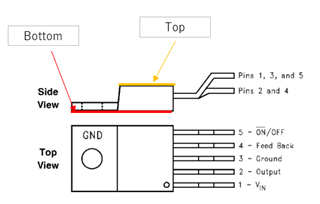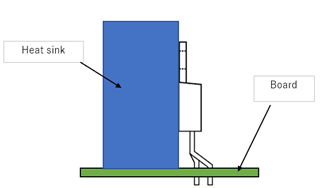Other Parts Discussed in Thread: TPS7B88-Q1
Tool/software:
Hi team,
I have two questions about LM2596T-ADJ/NOPB
Q1. Is the thermal resistance between the junction cases correct to be calculated using the thermal resistance of "R θ JC(top) = 2°C/W" in the datasheet (7.4) when the heatsink is mounted on the back? The heat sink mounting surface is the case (bottom), but the data sheet says “Junction-to-case (top) thermal resistance”, so I am curious.
Q2. Datasheet 7.9 shows "MAX duty cycle (ON) = 100%" *Feedback pin removed from output and connected to 0 V to force the output transistor switch ON."
In a circuit where the output voltage is set to 12V, if the input voltage drops below 12V (e.g. 8V), what is the output voltage? Is the duty cycle equal to 100%?
Regards,
Hiromu




